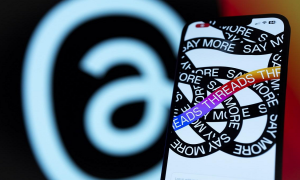In today’s digital era, where the rapid spread of information through social media and online platforms has become the norm, the importance of fact-checking and verification cannot be overstated. The rise of fake news and manipulated images has created a challenging environment where distinguishing truth from falsehood is increasingly difficult. Addressing this issue head-on, Google has taken a noteworthy stride by introducing a new tool that empowers users to verify the authenticity of images online. This innovative solution aims to foster a more informed and trustworthy digital landscape.
The Challenge of Fake Images
The proliferation of fake images poses various challenges, as they can be employed for purposes such as disseminating misinformation, swaying public opinion, or causing harm to individuals and organizations. With sophisticated software readily available, manipulating images has become effortless, making it arduous for ordinary users to determine their credibility. The repercussions of sharing or relying on fake images can be severe, leading to misinterpretations, the creation of false narratives, and harm to reputations.
Google’s Image Verification Tool
Google’s image verification tool leverages the power of artificial intelligence (AI) and machine learning to scrutinize and authenticate images. Drawing upon its extensive image database, the tool employs advanced algorithms to detect signs of manipulation or alteration. By comparing the uploaded image with its vast collection, the tool delivers an assessment of the image’s credibility to users.
How It Works
The functionality of the tool is straightforward. When encountering a suspicious image, users can upload it to Google’s image verification tool. The tool then conducts a series of intricate analyses, examining metadata, pixel-level details, and known manipulation techniques. By cross-referencing these elements with its extensive database, the tool provides a confidence score that indicates the likelihood of the image being authentic or manipulated.
The Benefits of Google’s Image Verification Tool
The introduction of Google’s image verification tool offers several benefits. First and foremost, it empowers users, enabling them to make informed decisions regarding the images they come across online. This tool encourages critical thinking and discourages the propagation of misinformation. Secondly, by verifying the authenticity of images, the tool acts as a potent weapon against fake news. It allows users to distinguish between fact and fiction, promoting responsible sharing and consumption of digital content. Additionally, the availability of a reliable image verification tool enhances trust in online information. Users can have greater confidence in the credibility of the images they encounter, contributing to a more trustworthy digital environment. Lastly, Google’s image verification tool strives to be transparent in its assessment process. Although it cannot offer absolute certainty, it provides users with a confidence score that facilitates informed judgments.
Read More: Pakistan Single Window (PSW) Launches Digital Trade Facilitation with China
The Limitations and Ethical Considerations
Despite the advanced algorithms employed by the image verification tool, it is crucial to acknowledge its limitations. There will always be instances where fake images can evade detection or genuine images are mistakenly flagged as manipulated. Furthermore, the tool may face challenges when dealing with newly created manipulated images that have not been indexed previously.
Ethical considerations also come into play, particularly concerning user privacy. The tool necessitates users to upload potentially sensitive images, raising privacy concerns. Google must prioritize user privacy and take measures to prevent the misuse of the tool’s capabilities.
Conclusion
In conclusion, Google’s introduction of an image verification tool represents a significant advancement in the battle against fake images. By empowering users to verify the authenticity of images encountered online, this tool contributes to a more informed and trustworthy digital landscape. However, it is essential to recognize the tool’s limitations and continue promoting media literacy, critical thinking, and responsible digital behavior. As technology continues to evolve, tools like these have the potential to make a substantial impact in combatting misinformation and fostering a more reliable online ecosystem.



























